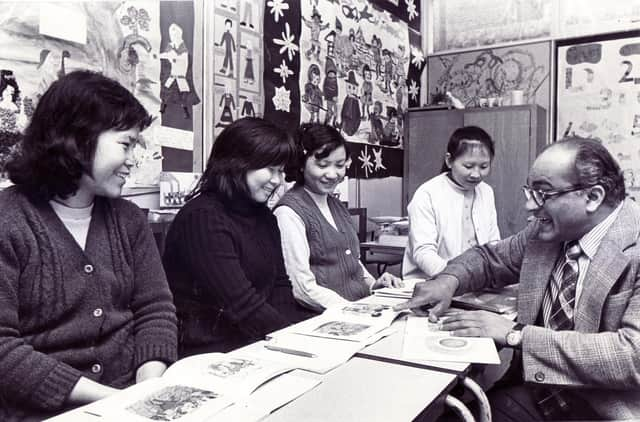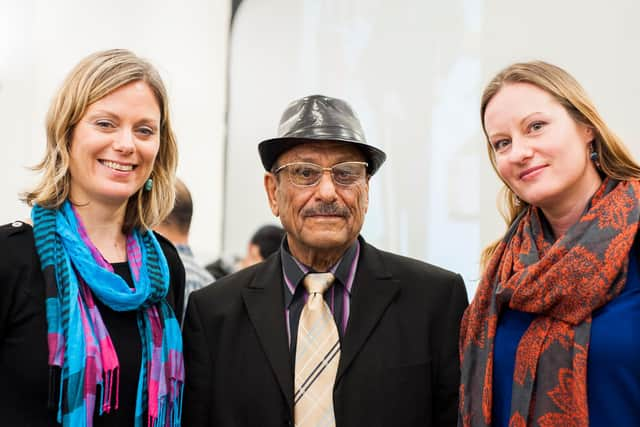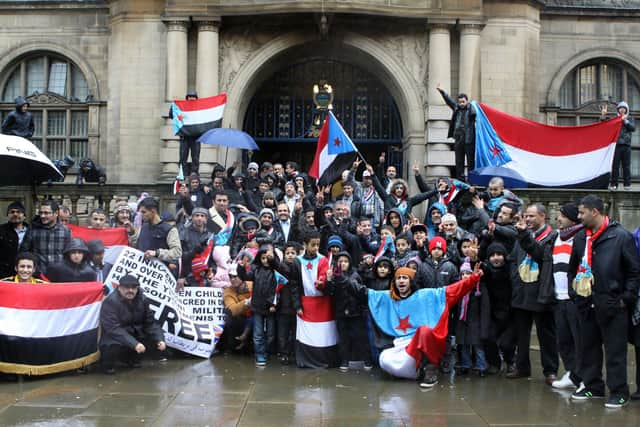Guides help to chart long history of Sheffield's BAME communities


A fascinating set of reference documents has been put together by the city archives, part of Sheffield Libraries service, for anyone wanting to research the history of several groups.
Some of Sheffield’s African and Caribbean communities have lived in the UK since the 18th century.
Advertisement
Hide AdAdvertisement
Hide AdThe 1725 church register for Harthill All Hallows records the baptism of Thomas Pompey of Guinea, Africa.
In the 1840s Pablo Fanque, the first black circus owner in Britain, visited Sheffield many times with his show.
His second wife, performer Elizabeth Corker, was from Sheffield.
Pablo’s name later became famous because he was mentioned in The Beatles song For the Benefit of Mr Kite on the Sergeant Pepper album.
Advertisement
Hide AdAdvertisement
Hide AdIt was based on one of his circus posters which caught the eye of John Lennon in a secondhand store.


The 1950s and 60s saw large-scale immigration, encouraged to cover the shortfall in labour following the Second World War.
People from Yemen, Somalia, South Asia and the Caribbean were invited here, principally to work in the steel and mining industries.
The Empire Windrush brought the first group of Caribbean immigrants to London in June 1948.
Advertisement
Hide AdAdvertisement
Hide AdIn 1956 people from the West Indies were first employed by Sheffield Transport Department as tram conductors.


Arthur Wharton, the world’s first black professional footballer, from the Gold Coast (now Ghana) came to play for Sheffield United in 1888.
In a distressing mirror to the Black Lives Matter protests over policing, in 1952, as part of a Colonial Office survey, Sheffield’s chief constable deputed two officers to "...observe, visit and report on" the black population.
A card index was compiled, listing the names, addresses, nationalities and places of employment of the city's 534 black inhabitants.
Advertisement
Hide AdAdvertisement
Hide AdIn 1986, Sheffield West Indian Association became SADACCA (Sheffield and District African Caribbean Community Association), based on the Wicker.
In recent years people from Eritrea, Somalia, Zimbabwe, Kenya, Ethiopia, Liberia and Congo have come to Sheffield seeking asylum, according to the guide.
People of Chinese origin have similarly long city roots.
The burial register for St Paul’s churchyard – now the Peace Gardens - for 1855 shows that A Chow, the son of magician Too Ki, was buried there on May 31, 1855. The vicar wrote the word 'Chinese’ in the entry.A laundry owner named Yun Wong with a business on Abbeydale Road was listed in a trade directory for 1910.
The first Sheffield China Week took place in June 1945 and churches and community centres followed over the next three decades.
Advertisement
Hide AdAdvertisement
Hide AdHowever, the first official Sheffield Chinese New Year celebrations only took place in 2004.
In recent years more students from south-east Asia have been attracted to study at the city’s universities.
A visible amount of investment in the city’s economy has followed them.
The earliest reference to a ‘Chinese’ restaurant is the Rickshaw in Broomhall Street, listed in a trade directory of 1957.
Advertisement
Hide AdAdvertisement
Hide AdTraditionally, the highest concentrations of people from the region live in Highfield, Sharrow, Broomhill and Broomhall.
They have come from mainland China, Hong Kong, Macau, Malaysia, Singapore, Taiwan as well as other parts of Britain.
The earliest references to south Asians living in Sheffield are from the 1920s in the Darnall area.
They mainly originate from countries that are now India, Pakistan and Bangladesh.
Advertisement
Hide AdAdvertisement
Hide AdThe Burngreave Cemetery burial register for 1923 records the burial of Sultan Mohamed, aged 32.
In 1946 Sheffield’s first official mosque was opened in a room on the ground floor of a house on Worksop Road in Attercliffe.
In 1963 the Ajanta at 22/24 Carver Street is said to be the first Indian restaurant listed in Kelly’s directory of Sheffield.
The S Alkash dining rooms at 14 Netherthorpe and the Khyber Café at 61 Attercliffe Common followed shortly afterwards.
Advertisement
Hide AdAdvertisement
Hide AdIn 1981 the Bangladesh Citizens Neighbourhood Project (BCNP) was established and in the same year a Sikh temple at 73 Jameson Street was first listed in the Sheffield Yellow Pages.
Three years later the Pakistan Muslim Centre on Woodbourn Road was set up.
Specialist support services for women followed in 1985 and 1992.
Somalis have been settling in Britain for well over a century, mostly as seafarers and traders living close to ports.
Advertisement
Hide AdAdvertisement
Hide AdMany Somalis came from east Africa to the city in the 1940s to 1960s, often to work in the steel industry, although there were a few arrivals in the 1930s.
More settled during the 1990s as they fled civil war raging in their country, which is now split into Somalia and Somaliland, joining established communities in Sheffield and other cities.
The main community centres are Broomhall, Burngreave, Darnall and Firth Park, according to the guide.
The story of Yemenis in Sheffield has parallels with the Somali one, as many travelled from the Arab country as seamen and traders.
Advertisement
Hide AdAdvertisement
Hide AdIn 1939 the British annexed the city and major trading port of Aden.
Although most Yemenis in Sheffield came to work after the war, many also went back when recession hit here in the 1980s.
New people arrived, fleeing a civil war in the 1990s, and some joined family already here.
The main community centres are Burngreave, Darnall and Firth Park.
Advertisement
Hide AdAdvertisement
Hide Ad*There is an A to Z of research guides online at https://www.sheffield.gov.uk/home/libraries-archives/access-archives-local-studies-library/research-guides
Editor's message: Thank you for reading this story. The dramatic events of 2020 are having a major impact on our advertisers and thus our revenues. The Star is more reliant than ever on you taking out a digital subscription to support our journalism. You can subscribe here for unlimited access to Sheffield news and information online. Every subscription helps us continue providing trusted, local journalism and campaign on your behalf for our city.
